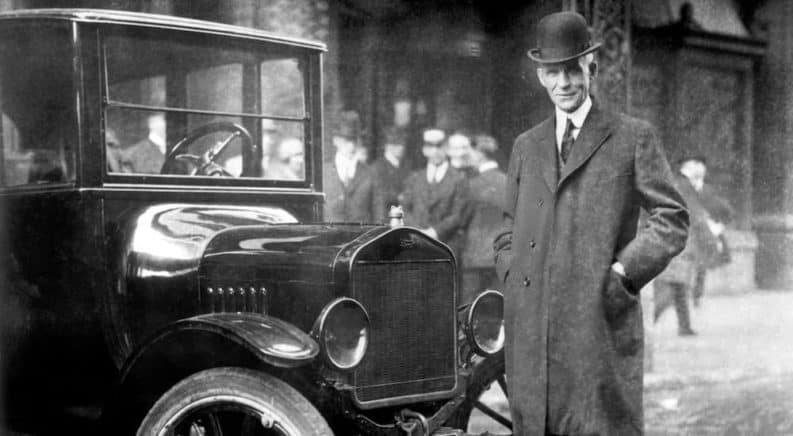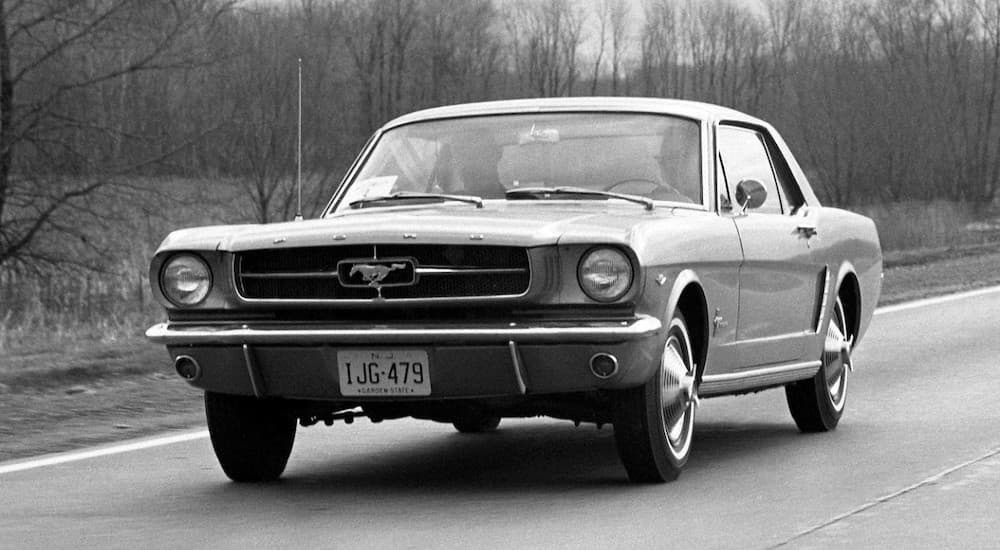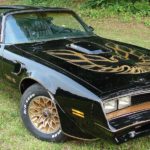Now that we’re two decades into the 21st century, it can be interesting to look back at what the auto industry of the 1900s through the 1990s looked like. There are plenty of famous cars from those decades, which were more than just vehicles but were part of revolutionizing and defining the auto industry. Cars that, without them, the industry wouldn’t be what it is today. These vehicles were the foundation for how most of us still think about cars, trucks, and SUVs.
I thought it would be fun to take a look back and where we’ve been and how we got to where we are now. I’m not going to go over every make and model from the last 100 years of automotive innovation because I’m not insane. But, we’ll take a look at a wide range of famous cars and vehicles that made the auto industry into what it’s become. I can only imagine what this list will look like a hundred years from now when people look back at how the industry changed throughout the 21st century.
The 1880s – Birth of the Auto Industry
I’m cheating and jumping back slightly to just before the start of the 20th century, because it’s worth considering a couple famous cars from the 1880s. Two models, in particular, have to be mentioned: the Benz Patent MotorWagen and the Daimler-powered Wilhelm Wafter Stagecoach. Both of these vehicles were built in Germany in 1886, and they are the first two vehicles that would set the stage for what was to come. The MotorWagen was the first automobile with an internal combustion engine, while the Wilhelm Wafter Stagecoach was the first model with four wheels. Without these two, the century that followed would’ve looked a lot different.
The 1900s – Mass Production
One of the major innovations to really make the auto industry what it has become is the ability to mass-produce vehicles for large-scale distribution and sale. This started in the 1900s with the Oldsmobile Curved Dash, which is generally considered the first mass-produced automobile. It was the top seller for many years due to its mass production and its impressive 5 hp one-cylinder engine.
The 1910s – An Industrial Revolution
Although it was first introduced in 1908, the Ford Model T really dominated the auto industry in the 1910s. This is one of the most famous cars ever built, and some would argue it’s the most important vehicle for the industry. With the Model T, Ford innovated in the field of mass production with the assembly line, which made it cheaper to make and cheaper to sell. At the start of the 1910s, the Model T sold for about $900; by 1916, due to improved efficiency in production, the price was down to $345––no wonder it dominated the industry.
The 1920s – Modern Cars Take Shape
Although models from other manufacturers, like Chevy, started to overthrow the Model T’s dominance in the 1920s, Ford came back with the Model A. The Ford Model A was, for many people, the beginning of modern car design. It had the setup that would become standard in terms of the clutch, steering wheel, and more, with numerous options for body color and style. And so, the Model A reclaimed the market for Ford and set the tone for car design for years.
The 1930s – Luxury and Technology
While the 1930s were marked with terrible hardship due to the Great Depression, there were still innovations and improvements being made. Things like heaters, automatic transmissions, and more were all being introduced in vehicles during this decade. The Cadillac V-16 is a fantastic example of that, with a luxurious feel and a truly gorgeous design that makes it very desirable to this day.
The 1940s – Decade of the Jeep
Few vehicles were as important to Americans serving in World War II as the Willys Jeep––and when soldiers came home, a lot of them didn’t want to say goodbye to their beloved cars. And so, the Willys CJ, or Civilian Jeep, was introduced in 1945: offering a mass-produced 4×4 that civilians could enjoy. It was incredibly popular and available for more than 40 years when the Jeep Wrangler took over its legacy in the 1980s.
The 1950s – Style and Power
There were a lot of amazing cars introduced in the 1950s, which makes it difficult to pick just one or two that remain truly iconic. The Chevy Corvette is the first one that comes to mind for me, which became the quintessential American sports car for many people. For drivers not into raw power, the Volkswagen Beetle became a worldwide hit in the 1950s, while the Buick Skylark and Chevy Bel Air defined gorgeous sophistication and luxury for many drivers.
The 1960s – Performance and Size
Not to be outdone by Chevy, Ford answered the Corvette with the Mustang in 1964, creating an American rivalry between two of the most famous cars ever built. In three years after its launch, the Mustang had sold 1.7 million units, making it Ford’s most successful launch since the Model A back in the 1920s. And once the Mustang appeared in films like “Bullitt” and “Gone in Sixty Seconds,” it had cemented its place in American automotive history.
The 1970s – Fuel Efficiency Matters
There’s a strange dichotomy when you look at the most famous cars of the 1970s, and both can be viewed through the lens of fuel efficiency. On the one hand, you have the Honda Civic, with a small size and incredible fuel economy that really launched the success of Japanese car brands here in the US. But on the other hand, you have models like the Pontiac Firebird, which became incredibly popular despite lacking in fuel efficiency. Once it was featured in “Smokey and the Bandit” and “Knight Rider” in the 1980s, the legacy of the Firebird was set in stone.
The 1980s – Families and Functionality
Following the oil crisis of the 1970s, many Americans wanted practical vehicles that were great for use with a family. Enter the Dodge Caravan, which became one of the most popular minivans ever made, and it launched the minivan revolution of the 1980s and 1990s. On the other side of this, however, you have cars like the Ford Taurus, which offered fuel efficiency that could compete with cars coming from Honda, Toyota, and other Japanese manufacturers. And you can’t look at the 1980s without taking a moment to recognize the Ford F-150, which ushered in an era of pickup truck domination that remains to this day. The F Series became the bestselling vehicle in 1981, and it has maintained that title ever since.
The 1990s – The SUV Takes Off
Although the Dodge Caravan and minivans shined in the 1980s, the 1990s brought something new to the table: the SUV. Models like the Ford Explorer and Bronco surged in popularity and led the way for SUVs to slowly begin to dominate the industry. While the Toyota Camry began to take over the sedan market in the US, American manufacturers looked to SUVs as the future of where they would put a lot of their focus.
And so it remains: SUVs continue to be one of the most popular segments of the American auto market, which probably explains why companies like Chevy and Ford seem to offer more SUV models than cars and trucks combined. So far this century, I’d say the Tesla Model S is one that people will look back on and say it changed the industry and redefined it for a new generation of drivers. But it remains to be seen what other vehicles will join this impressive pantheon of iconic and famous cars.






